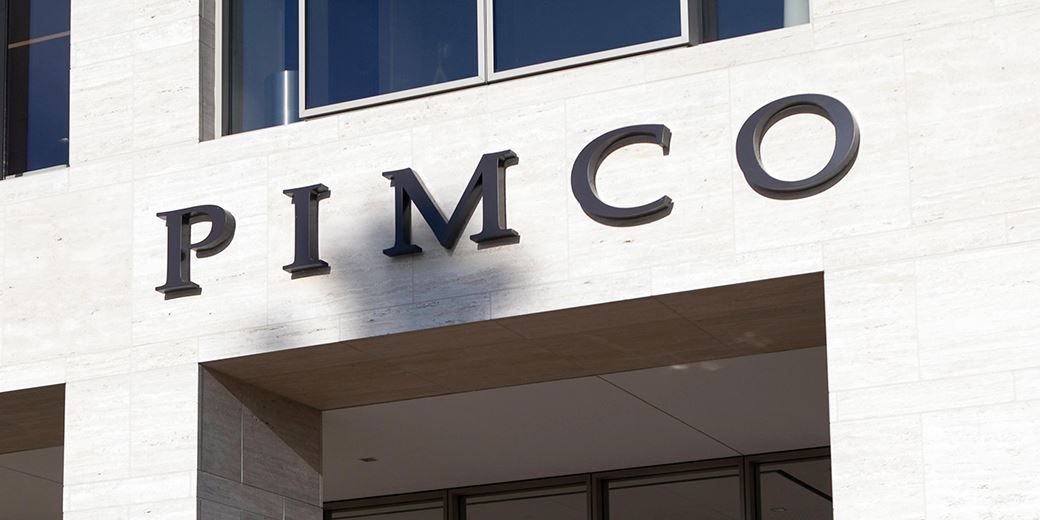There might be light at the end of the tunnel, but it ain’t here yet.
Pimco: Hard times for the giant of fixed income

Latest Newsletter
Value stance rewards managers with first AAA rating
The year comes to a close with a host of managers gaining their AAA wings.
Real Life: A cheaper, smarter way to fly business to the US
Companies are clamping down on travel costs. Here’s how to travel in comfort while keeping the expenses department happy.
Community
Daniel Ivascyn, group CIO of the big bad bond behemoth Pimco recently bigged up the attractiveness of the bond market.
Which, as the Financial Times amusingly points out, it’s unlikely he would say anything to the contrary, given that bonds are what his firm does.
In many ways, it’s hard to argue with the logic of the biggest active bond house in the world. There are a lot of people getting interested in the asset class for the first time in nearly a decade, but as yet the money just isn’t coming in.
August is the only month this year where the flows have been net positive ($25.8bn) across active and passive And year-to-date, nearly half a trillion dollars – $466.2bn to be precise – has been taken out of bond funds, more than 10 times the net redemptions of mixed assets, the nearest asset class for outflows.
It’s true that most of that was withdrawn in the first half of the year when it became clear that central banks were going to have to step up their approach to inflation.
But even in October, a period in which interest rate expectations have mellowed, $66bn was withdrawn and two-thirds of funds had net outflows.
What then of Pimco? Well as the song goes, the bigger they come, the harder they fall. The group has shed the most assets – $76.5bn globally year-to-date – and been hardest hit in terms of most market share.
Looking at Pimco’s suite of Ucits funds, the past year has seen net outflows of $25.9bn, or 12% of assets.
While much of that has been driven by the poor run for fixed income, Pimco’s performance has not been up to its usual high standards, with more than half (52%) of its Ucits funds in the bottom half of their peer groups.
The losses
Over the past three years, Pimco has lost market share on 60% of its funds, led by Mark Kiesel’s GIS Global Investment Grade Credit fund, which has shed 21.4 percentage points of market share over that period. Kiesel, who celebrated his 20th anniversary on the strategy recently, has had a run to forget over the past three years and stands in the bottom decile.
This is the manager’s only poor run on the strategy, after being the most consistent individual in this sector for his entire tenure, outperforming in every three-year discrete window.
However, Kiesel’s team have clearly been hit hard by the selloff in investment grade credit in recent years. The fund has had outflows of $4.8bn in the past 12 months alone, although it still has 26% of the sector.
A small portion of those outflows have made their way to the ESG variant of the strategy, GIS Global Investment Grade Credit ESG, which has taken in net new money of $660m and has grown its market share by three percentage points in the past three years.
In terms of pure outflows, it is Daniel Ivascyn’s fund, GIS Income which has been hit hardest with net redemptions of $7.2bn in the past year. Over the past three years, it has lost 6.2 percentage points of market share despite top-quartile returns over that period.
Still, the $54bn fund as it has a 51.4% market share of the Global Flexible Bond – USD Hedged sector and is part of the largest actively managed bond strategy in the world.
The gains
Despite this bleeding, there have been some areas where Pimco has had positive inflows and gained market share. The most significant of these is the hard currency GIS Asia High Yield Bond fund, which has had net inflows of $1.1bn in the past 12 months to take assets to $2.3bn. It has gained 21.6 percentage points of market share in the past three years.
Elsewhere the ESG variant of the global bond fund GIS Global Bond ESG has had inflows of $580m, almost entirely offsetting the $660m outflows from the non-ESG variant (GIS Global Bond).
Pimco by numbers
Across 52 funds
Performance
- 25 (48%) are in the top two quartiles over three years.
- Nine (17%) are top quartile.
Market share
- 37 (71%) with a three-year track record have 1% or more market share.
- 16 (30%) have more than 5% market share.
- Nine (17%) have more than 10% market share.
Latest Newsletter
Amplify Issue 30: The fund groups topping the tree
We analyse which groups have had the biggest inflows and outflows in 2022, look at managers achieving their first AAA ratings, and hear from Rob Kyprianou on why regulation gets it back to front.
Amplify Issue 29: Red hot: 2022’s private market hiring spree
2022 has been a hot year for private markets, but are asset managers putting the brakes on their expansion efforts? Plus, we look at how the bear market has affected launches this year and look at how firms can better communicate their brand values.
Amplify Issue 28: Fill your ESG product gaps
We hear from fund buyers on what they’re looking for from an ESG fund, find out what Neuberger Berman is plotting in the alts world, and learn the winners of Citywire’s Gender Diversity Awards.
Community
